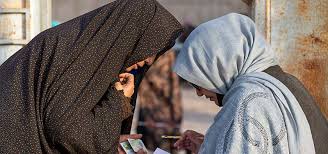- Courses
- GS Full Course 1 Year
- GS Full Course 2 Year
- GS Full Course 3 Year
- GS Full Course Till Selection
- Online Program
- GS Recorded Course
- NCERT (Recorded 500+ Hours)
- Polity Recorded Course
- Geography Recorded Course
- Economy Recorded Course
- AMAC Recorded Course
- Modern India, Post Independence & World History
- Environment Recoded Course
- Governance Recoded Course
- Science & Tech. Recoded Course
- International Relations and Internal Security Recorded Course
- Disaster Management Module Course
- Ethics Recoded Course
- Essay Recoded Course
- Current Affairs Recoded Course
- CSAT
- 5 LAYERED ARJUNA Mentorship
- Public Administration Optional
- ABOUT US
- OUR TOPPERS
- TEST SERIES
- FREE STUDY MATERIAL
- VIDEOS
- CONTACT US
UNDP's 2023 Gender Social Norms Index
UNDP's 2023 Gender Social Norms Index


Latest Context
According to the United Nations Development Programme (UNDP), biased gender social norms relentlessly create obstructions in moving forward towards achieving gender equality and violate human rights. The Gender Social Norms Index (GSNI) for 2023 of UNDP offers invaluable insights into the persistence of these biases and their impact on various aspects of women's lives.
Key Findings of the Index
Concept: The goal of this Index of UNDP is to find the attitudes of the people towards women with respect to four dimensions: educational, political, economic, and physical integrity. As per the UNDP reports approximately 90% of people see women with one or more biasedness.
Findings
- Political Participation and Representation: Lack of equality in political participation is the result of partiality in gender social norms. Approximately two in five believe men make better business executives while half of the world's population believes men make better political leaders.
- Lower representation of women in some countries ’parliament is the result of a greater bias towards women. The proportion of women heads of state or government who are women is approximately 10% worldwide since 1995, and women constitute just a quarter of parliament seats globally on average.
- In conflict-prone countries, only very few women are occupying leadership positions, especially at the negotiation tables in the recent conflicts in Ukraine (0%), Yemen (4%), and Afghanistan (10%). In achieving political representation, migrant women, indigenous women, and women with disabilities face more significant challenges.
- Economic Empowerment: Gender gaps in economic empowerment continues to exist despite significant progress in education. Better access of women to education has not resulted in better economic outcomes. The average income gap is 39% in 59 countries where adult women are more educated than men,
- Domestic Chores and Care Work: Countries that have a higher bias for women exhibit significant disparity in domestic chores and care work. In comparison to men, women spend approximately six times more time on these tasks that restrict their opportunities for personal and professional growth. A very dangerous situation is that 25% of people believe that it is justified for a man to beat his wife that shows deep-rooted biases.
- Hopeful Signs and Breakthroughs: An increase in the proportion of people with no bias in any indicator is observed in 27 out of 38 surveyed countries even though the overall progress has been limited. Some countries that registered progress are Uruguay, Germany, New Zealand, Singapore, and Japan, with progress greater among men than women. It has been achieved through breakthroughs in gender social norms. policies, regulations, and scientific advancements.
- The Urgent Need for Change: Biased gender social norms result in hindering societal development and well-being in addition to women's rights. The decline in the Human Development Index (HDI) is the result of the lack of progress in gender social norms.
Major Issues Related to Gender Equality in India
- Limited Access to Education and Healthcare: Gender inequality is getting more deepened due to limited access to education and healthcare for women in certain parts of India. Rural areas still face significant challenges despite progress in increasing female literacy rates, particularly in urban areas. Furthermore, insufficient access to healthcare, including reproductive health services, creates more problems for women's well-being and development.
- Cultural and Societal Norms: India is facing deep-rooted cultural and societal norms that are causing high gender inequality. Women's freedom and opportunities are the results of traditional beliefs regarding gender roles and expectations limit. For example, giving more preference to the male child causes significant gender inequality and incidences of female infanticide.
- Violence against Women: Every kind of violence against women, like domestic violence, sexual harassment, and rape, are on the rise in India. These incidents are growing which shows the challenges of changing deep-seated attitudes and behaviours towards women, although laws have been enacted and awareness campaigns are launched on a time-to-time basis. Latest cases like the Hathras gang rape case in 2020 pointed out the loopholes in the system that sparked outrage regarding the handling of such types of cases.
- Economic Disparities: Gender inequality is also the result of economic disparities between men and women. In India, women often are subjected to unequal pay, limited job opportunities, and lack of representation in decision-making roles. The wage gap between men and women has become a persistent challenge and hence resulting in high disparity in Indian society.
- Differentiation in the Socialisation Process: In many parts of India, there are still different socialisation norms for men and women, especially in rural regions, Women, as per society’s expectations are required to be soft-spoken, calm, and quiet. They should behave and walk, talk, sit and behave as per the expectations of the society. While men should be confident, loud, and could display any behaviour as per their wish.
Latest Government Schemes Related to Women Empowerment
- Pradhan Mantri Matru Vandana Yojana
- Pradhan Mantri Mahila Shakti Kendra Scheme
- One Stop Centre Sukanya Samriddhi Yojna
- Beti Bachao Beti Padhao Scheme
Way Forward
- Economic Independence: It has become a dire need to promote entrepreneurship and offer financial assistance, mentorship, and training to women to establish their businesses, and promote equal pay and flexible work arrangements. In addition to this, attention must pay to implementing skill development programs in order to increase women's employability and promote their participation in traditionally male-dominated sectors.
- Awareness About Safety Measures: A multi-dimensional strategy to increase awareness amongst women about the current government initiatives and mechanisms must be designed to secure the safety of women throughout the country. Nirbhaya Police Squad, and Panic Button, are some good measures in order to increase women’s safety.
- Better Education Opportunities: To enhance the stature of a woman in society by providing quality education could result in their holistic development. Education plays a very vital role in developing self-confidence among women in addition to shaping the attitude in positive sense of young men towards girls and women. Moreover, to introduce gender equality and sensitivity into the school curriculum from an early age, empathy, emphasising respect, and equal opportunities for all is the need of the hour.
- From Women Development to Women-Led Development: There is a dire need to revisit the role of women should as architects of India’s progress and development, rather than passive recipients of the fruits of development.

Prelims
Q. Two of the schemes launched by the Government of India for Women’s development are Swadhar and Swayam Siddha. As regards the difference between them, consider the following statements: (2010)
1. Swayam Siddha is meant for those in difficult circumstances such as women survivors of natural disasters or terrorism, women prisoners released from jails, mentally challenged women etc., whereas Swadhar is meant for holistic empowerment of women through Self Help Groups.
2. Swayam Siddha is implemented through Local Self Government bodies or reputed Voluntary Organizations whereas Swadhar is implemented through the ICDS units set up in the states.
Which of the statements given above is/are correct?
(a) 1 only
(b) 2 only
(c) Both 1 and 2
(d) Neither 1 nor 2
Ans: (d)
Mains
Q.1 “Empowering women is the key to control population growth”. Discuss. (2019)
Q.2 Discuss the positive and negative effects of globalization on women in India. (2015)
Q.3 Male membership needs to be encouraged in order to make women’s organizations free from gender bias. Comment. (2013)



